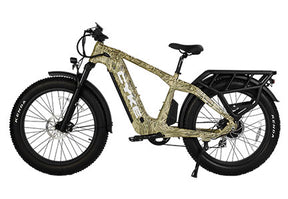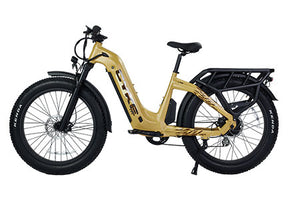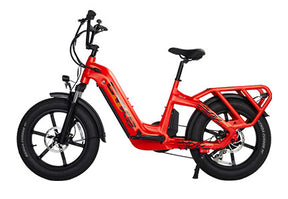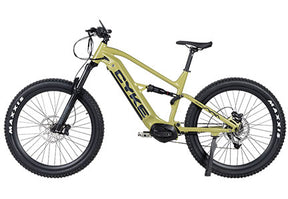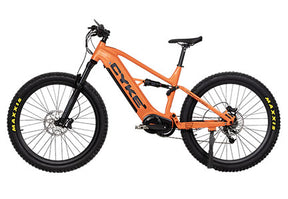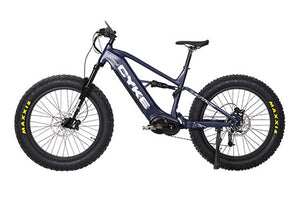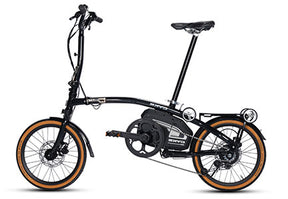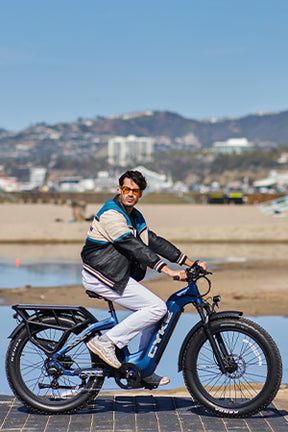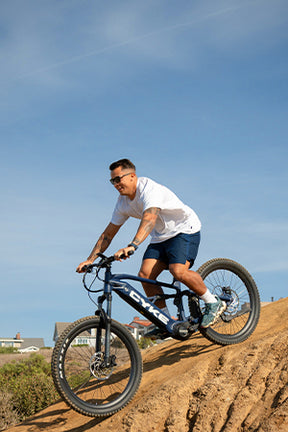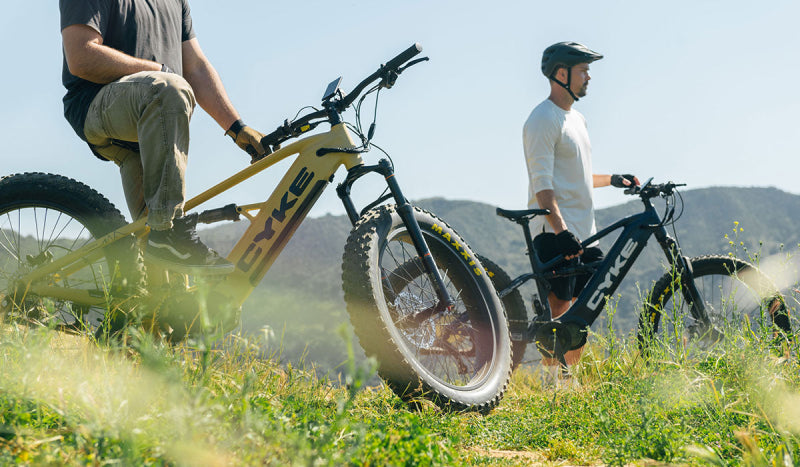Featured in this posts
Ebike Classes: Class 3 Ebike vs Class 1&2 Ebike
As we work towards sustainable transportation solutions, ebikes are becoming a popular option for many people in various parts of the world. By the end of 2022, the estimated number of e-bikes worldwide exceeded 36 million, and this figure is expected to be over 77 million by 2030. The rising popularity of ebikes is mainly due to the many benefits they offer, particularly in terms of speed when compared to regular bikes.
According to federal regulations, the maximum acceptable speed ranges from 20 to 28 miles per hour depending on the class of the ebike. This variation in top speed is among the reasons it is crucial to understand the ebike class you are buying and how it differs from the others. In this article, we will delve into everything you need to know about the different ebike classes to make it easier to choose one that suits your needs. Let’s start with Class 3 Ebikes.

Class 3 Ebikes
Definition & Characteristics
Class 3 Ebike is a type of electric bike with a pedal-assist electric bike system to provide motor assistance to speed up to 28 mph while pedaling. This speed makes them the fastest category of ebikes in the United States that don't fall into the motorcycle classification. Despite having a pedal-assist electric bike system, it is important to note that the motor in Class 3 Ebike only kicks when you start pedaling.
Summary Class 3 Ebike Features
- Maximum Assisted Speed: 28 mph (45 km/h) with pedaling assistance
- Motor Rated Power: 750 Watts (equivalent to 1 horsepower)
- Pedal Assistance: Motor assistance is activated when the rider is pedaling, usually there is no throttle. But some improved models would be equipped with throttle for more convenience.
Benefits & Applications
- They are the fastest among all ebike classes, making them an excellent choice for those seeking speed.
- Class 3 Ebikes are ideal for longer commutes as their higher speed can significantly reduce travel time.
- These ebikes do not have a speed limit of 20 miles per hour, which allows for consistent motor support at higher speeds.
Considerations & Regulations
You can use a Class 3 Ebike on paths or trails meant for regular bicycles, and can also use it on roads and streets, but you’ll have to adhere to the same rules as traditional bicycles.
Another legal consideration is the use of helmets based on ebike class and age. Florida, Maine, Maryland, and several other states require riders under 16 to wear helmets. Additionally, at least 26 states, including Florida, New York, and California, require Class 3 Ebike riders to wear helmets.
Other states, including New York, California, Georgia, Virginia, Louisiana, Ohio, Tennessee, and West Virginia require Class 3 Ebike users, regardless of age, to wear helmets.
For more information about the specific regulations in your state, check out this detailed ebike regulations guide.
Class 1 & 2 Ebikes
Definition & Features
Class 1 and Class 2 Ebikes share common characteristics, including a Maximum Assisted Speed of 20 mph (32 km/h) and a Maximum Motor Rated Power of 750 Watts (1 horsepower).
However, these two ebike classes have a few differences, which include the following;
- Class 2 Ebikes support the throttle option, allowing the motor to be engaged without pedaling.
- Class 1 Ebikes provide motor assistance only when the rider is pedaling. They do not have a throttle for direct motor activation like Class 2 Ebike
Benefits & Applications
- They are relatively cheaper than Class 3 Ebikes, which makes them an ideal choice for those on a budget.
- Class 1 and 2 Ebikes are designed for shorter commutes, making them suitable for urban or local travel.
- Thanks to the presence of a throttle, Class 2 Ebikes can be ridden without pedaling. This gives riders the option of motor-only operations.
Class 3 vs. Class 1 & 2
Performance & Use Cases
Class 3 Ebikes offer superior performance due to their higher top speed of 28 mph, which makes them ideal for longer commutes or situations where faster travel is necessary. On the other hand, Class 1 & 2 Ebikes have a top speed limited to 20 mph, which is suitable for shorter commutes and adheres to most typical bicycle speed limits.
Legal Considerations
The main legal consideration when choosing between ebike classes is the maximum speed. Class 3 Ebikes are allowed to operate at speeds not exceeding 28 miles per hour, while Class 1 and 2 Ebikes are limited to 20 miles per hour. Another critical legal consideration is where these Ebikes are permitted.
Class 1 and 2 Ebikes are generally allowed in more places, providing more flexibility to riders. On the other hand, Class 3 Ebikes are often restricted from bike paths or trails designated for conventional bicycles. However, they can be used on roads and streets, but riders have to follow the same regulations as traditional bicycles.
Price Range
The prices for ebikes in the different classes usually fall within the following ranges:
- Class 1 Ebikes: $399 to $1,029
- Class 2 Ebikes: $499 to $3,683
- Class 3 Ebikes: $1,499 to $5,249
Besides the class, there are other factors that affect the price of ebikes and these include;
- Quality of materials used
- Battery size
- E-bike size and weight
- Overall comfort and riding experience
Best Place to Get Top-Quality Class 3 Ebikes
There are various platforms, including online stores, where you can purchase Class 3 Ebikes. CYKE is one of the most reliable platforms for buying Class 3 Ebikes, offering high-quality options starting from $2,299. To demonstrate the trust they have in their quality, CYKE provides up to 5 years of limited warranty for their bikes, giving you peace of mind when you purchase a bike from their platform.
Conclusion
This article has explored all the key points and differences you need to be aware of when choosing a proper class of ebike to buy. The primary difference among these bikes lies in their top speeds, a critical factor you must consider when buying one. Overall, Class 3 Ebikes are the fastest, with a top speed of up to 28 miles per hour in contrast to 20 miles per hour for Classes 1 and 2.
In addition to the speed limit, ebike users must adhere to various regulations, such as the requirement to use helmets and other protective gear. These regulations can vary from state to state. Therefore, before making your ebike purchase, you need to ensure that you're aware of the ebike regulations in your state. This will enable you to select an ebike class that suits your needs without having to compromise your riding experience because of your state's laws.
